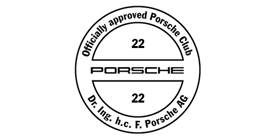Been told by a very serious Anorak that this engine was originally meant to be a Turbo and sodium valves stronger bottom end and other goodies were incorporated in the build spec .... True or False?
2.7 Lux Engine Fact or Fiction?
- Thread starter carreraboy
- Start date
1st I've heard......
Makes no sense.
It is perfectly reasonable to believe that they would have built larger capacity Turbos over time if the global economy had not tanked and the 911 marketing people had not felt threatened. After all, that's what the 968 Turbo S is, an 8v 3.0 litre turbo, and they could easily have done a 2.7 or 2.8 in the 944 / 968 as well if they'd wanted.
But they didn't. Certainly a 2.7 Turbo would have had sodium cooled valves, but they knew they weren't making one, so why buy a lot of expensive and unnecessary valves for a car you're not going to make?
And the standard bottom end is pretty much bullet proof anyway, at any sort of power out put they would have adopted for a 2.7T road car -- probably 270 or 280 bhp, to fit between the outputs of the 2.5 turbo and the 305 bhp road car 3.0 turbo units (968 Turbo S).
It is perfectly reasonable to believe that they would have built larger capacity Turbos over time if the global economy had not tanked and the 911 marketing people had not felt threatened. After all, that's what the 968 Turbo S is, an 8v 3.0 litre turbo, and they could easily have done a 2.7 or 2.8 in the 944 / 968 as well if they'd wanted.
But they didn't. Certainly a 2.7 Turbo would have had sodium cooled valves, but they knew they weren't making one, so why buy a lot of expensive and unnecessary valves for a car you're not going to make?
And the standard bottom end is pretty much bullet proof anyway, at any sort of power out put they would have adopted for a 2.7T road car -- probably 270 or 280 bhp, to fit between the outputs of the 2.5 turbo and the 305 bhp road car 3.0 turbo units (968 Turbo S).
My Anorak said the engines were already built ready to go and they pulled the Turbo ... how do you check for sodium vaves?
Sorry, but your man is talking obvious rubbish, if you consider the facts of the 2.7 engine a little deeper. If they had built the engines for turbocharging, they would have been very low compression. They actually increased the compression of the 2.7 NA engine to 10.9:1. Thus compares with 8:1 on a Turbo.
Are we to believe they built all these engines at once, before starting production of the cars they were to go into; changed their mind about the whole programme; dismantled all the engines, replaced all the low compression pistons and rebuilt all the engines as high compression NA units before even selling a single 2.7 car?
Are we to believe they built all these engines at once, before starting production of the cars they were to go into; changed their mind about the whole programme; dismantled all the engines, replaced all the low compression pistons and rebuilt all the engines as high compression NA units before even selling a single 2.7 car?
simdel1
New member
Sounds strange. At the most you'd build maybe 10 engines before your order of turbos arrived (and were then subsequently cancelled). I suppose there's a chance that some of those engines were sent out the door as production engines.
Edit: I posted slower than Simon who has expressed my thoughts much better than I have!
Edit: I posted slower than Simon who has expressed my thoughts much better than I have!
Generally you identify a sodium filled valve by it being stamped or otherwise marked. Compared to a solid valve of otherwise identical external dimensions they should bea little lighter, maybe up to 10 g less than a solid valve.
I suppose you could try x-raying them. The definite way of finding out would be to saw one in half, but I strongly recommend against it as the exposed sodium is hazardous.
I suppose you could try x-raying them. The definite way of finding out would be to saw one in half, but I strongly recommend against it as the exposed sodium is hazardous.
pauljmcnulty
Active member
2.7 valves are unique, and expensive (over £100 each ISTR). Perhaps someone's tried to justify it by suggesting they are made from unobtanium? [8|]
Thats why it was a one year model he tells me, some of the pre built engines went out.
It would seem they are indeed sodium then Paul and story true? Gerhardt did work at the factory in the 80's .....
Gerhardt now tells me they let the engines out with the sodium valves and altered the CR on the first few built engines but kept the other stuff ....
Special head as well he says ...
pauljmcnulty
Active member
It would seem they are indeed sodium then Paul and story true?
Not so far as i've ever heard. Just that the 2.7 was a run-out model, and the unique valves are more expensive than the ones fitted to the hundreds of thousands of 2.5 Luxes and 924S models.
Dont intend taking mine apart to check [ ]
]
Diver944
Active member
ORIGINAL: carreraboy
Gerhardt now tells me they let the engines out with the sodium valves and altered the CR on the first few built engines but kept the other stuff ....
Stop feeding the Troll [
This is definitely untrue. My 3.2L Turbo was built using a 2.7 head and the standard 2.7 valves were all replaced for ones that were more suitable.
I'm with Paul. The main application for a 2.7 head, after the Lux it is fitted to goes off to the happy hunting ground, is that it's the correct head to make a 3.0 or larger 8 valve turbo engine in conjunction with a 968 or S2 block. You have to use Turbo exhaust valves, though - and they *are* sodium filled.
Used 2.7 heads, if in good condition, have always been worth a fair bit of money for this reason, combined with their relative scarcity. But there's nothing particularly unusual about them from the performance point of view.
Used 2.7 heads, if in good condition, have always been worth a fair bit of money for this reason, combined with their relative scarcity. But there's nothing particularly unusual about them from the performance point of view.

Posts made and opinions expressed are those of the individual forum members
Use of the Forum is subject to the Terms and Conditions
Disclaimer
The opinions expressed on this site are not necessarily those of the Club, who shall have no liability in respect of them or the accuracy of the content. The Club assumes no responsibility for any effects arising from errors or omissions.
Porsche Club Great Britain gives no warranties, guarantees or assurances and makes no representations or recommendations regarding any goods or services advertised on this site. It is the responsibility of visitors to satisfy themselves that goods and/or services supplied by any advertiser are bona fide and in no instance can the Porsche Club Great Britain be held responsible.
When responding to advertisements please ensure that you satisfy yourself of any applicable call charges on numbers not prefixed by usual "landline" STD Codes. Information can be obtained from the operator or the white pages. Before giving out ANY information regarding cars, or any other items for sale, please satisfy yourself that any potential purchaser is bona fide.
Directors of the Board of Porsche Club GB, Club Office Staff, Register Secretaries and Regional Organisers are often requested by Club members to provide information on matters connected with their cars and other matters referred to in the Club Rules. Such information, advice and assistance provided by such persons is given in good faith and is based on the personal experience and knowledge of the individual concerned.
Neither Porsche Club GB, nor any of the aforementioned, shall be under any liability in respect of any such information, advice or assistance given to members. Members are advised to consult qualified specialists for information, advice and assistance on matters connected with their cars at all times.








